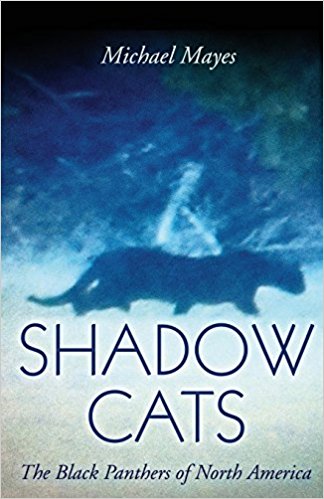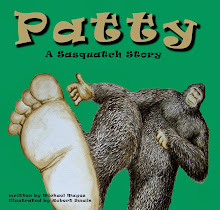A reader got in touch with me yesterday and reported that a pair of American Badgers (Taxidea taxus) were recently taken on a Coryell County, Texas ranch. This particular ranch specializes in raising turkey and several different species of exotics. It seems the ranch owner had been experiencing some problems with an animal of some sort eating the turkey eggs. Coyotes were suspected so the owner had one of his hands go out to try and eliminate a few of the problem canids. This would not only prevent egg thievery but minimize the possibility that some of the young exotic ungulates on the property would be taken later. Instead of coyotes, however, the hand came across two very angry badgers. The largest, according to the reader who submitted this report, weighed 50 lbs. and the smaller animal 35 lbs. My guess is that the ranch hand stumbled across a mating pair (badgers mate in summer and early fall) and they weren’t happy about being disturbed. I can’t say I blame them for that but their protestations did them no good and they were quickly dispatched.
Badgers are members of the Mustelidae family which also includes weasels, ferrets, otters and wolverines. They are stocky short-legged animals that have an almost flat appearance. They are powerful digging/burrowing animals that possess huge claws on their forepaws. Badgers are easily recognizable due to their unique black and white facial markings highlighted by dark patches, or “badges,” on their cheeks and a white stripe that extends from the nose back to at least the base of the skull and sometimes farther down the spine. The rest of the body is covered with a coarse rough grey coat. The tail is short but thick and “bushy” in appearance. According to >The Mammals of Texas - Online Edition, males average about 22-25 lbs with females slightly smaller. That being the case, if the weights reported by the reader are accurate, these two badgers were particularly robust (possibly due to the rich diet in which they had been indulging).
The badger is high on my list of animals I’d like to photograph. I’ve placed cameras overlooking suspected badger dens but have never had any luck getting a picture. This could be due to the fact that badgers tend to stay in a den for short periods of time only before moving on to another location. Compounding the difficulty is the fact badgers are mostly solitary (except for mating season) and most active at night. These factors make them less than cooperative subjects for a camera trapper.
Badgers are fierce fighters with few natural enemies. They, like their wolverine relatives, can hold their own against even the largest of dogs and are often considered to be particularly ill-tempered. Even so, the badger is capable of cooperation as they’ve been known to partner with coyotes in a mutually beneficial hunting relationship. Badgers are strong diggers who tear into the ground after rodents like voles, ground squirrels and prairie dogs while the coyote will stand by to run down any of the prey animals that get by the burrowing badger. The combination of these two species working together is quite effective.
It may surprise many that badgers range over most of Texas with the exception of the eastern-most part of the state. This is due in part, no doubt, to the fact that the University of Wisconsin has adopted the badger as its mascot. This had led many to believe that the badger is strictly a northern animal. That simply is not the case. As you can see from the distribution map below, badgers are quite well known in Texas though they have not been officially documented in Coryell County. That fact makes this story even more unique.
Before I close I would like to address the concern some might have that these animals could have been taken illegally. After doing a bit of research, I’ve found that clearly not to be the case. There is no season on badgers in Texas but they do fall under the regulations set forth for fur-bearing animals. That being the case, badgers can legally be taken and possessed year round so long as the person taking them has a valid hunting license and does not sell any part of the fur-bearer (pelt). This falls under the regulations for a recreational harvest. You can read the regulations regarding badgers and other fur-bearing animals here. In addition, these badgers were causing damage and monetary losses to the landowner. So, they would also fall under the nuisance animal umbrella. The Texas Parks & Wildlife website clearly states the following regarding fur-bearing nuisance animals:
“A landowner on their own land or their authorized agent is not required to have a trapper's or hunting license if these nuisance animals are taken while causing loss or damage to agricultural crops, livestock, poultry, or personal property. However, such animals or their pelts may not be possessed or sold.”
Either way, the taking of these badgers was legal according to Texas law.
I am labeling this post under the “out of place animals” tag. One could argue that designation either way, I suppose. Badgers are known to roam most of Texas but the fact that they have not been officially documented in Coryell before now would seem adequate justification for the label. It just goes to show that if you are willing to get off the couch and look around a bit there is just no telling what you might come across in this great state.
Thursday, July 5, 2012
Subscribe to:
Post Comments (Atom)
















Excellent write-up. I had no idea of the partnership between badgers and coyotes
ReplyDeletePretty sure there is a road kill badger on highway 71 westbound just past cedar creek. Bastrop county
ReplyDeletePretty sure there is a road kill badger on highway 71 westbound just past Cedar Creek, Bastrop county
ReplyDeleteHello,
ReplyDeleteI know this is an older post, but I too would like to photograph a badger. I'm in Tom Green County. Do you or anyone you know, know of a populated city or county. I would travel, but I would want to increase my chance as much as possible.
Thanks!
This article is very good. check for American Badger Facts, Diet, Behavior, Images And Photos
ReplyDeleteI’m in Mason County. January 26, 2022 I was positive I saw something I’d never seen before. And last night 9/2/22 again. Was watching it move swaying back and forth several feet at a time fast left to right. Stood up grabbed a branch as to swing it seemed to be kind of longer front arms. I would guess 20-30lbs. It was dark but did have street lights as it disappeared back into the woods along Comanche Creek. I watched it for 5-10 min. I’m pretty sure it was a badger looking at pictures and videos for the last 2 hrs.
ReplyDeleteI hunted on a lease in Gillespie county and the landowner there shot a badger on his land in stonewall around 2012’. My father paid to have it mounted, so I know they’re there even though the map doesn’t indicate documented cases.
ReplyDelete